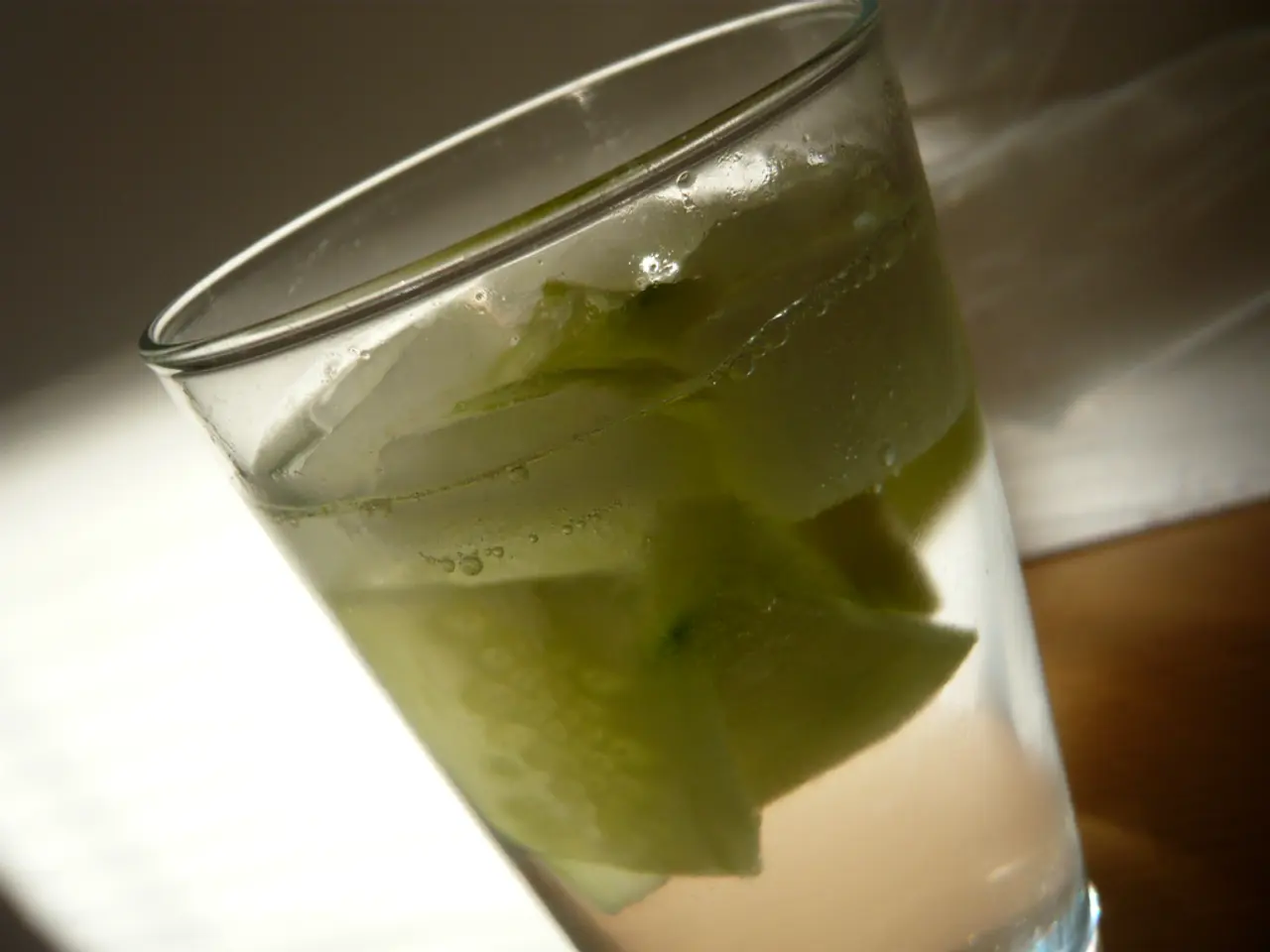Measuring the amount of liquid in a glass: Exposing the enigma surrounding glassware measurements
In the world of drinks, the size of the glass can often be just as important as the drink itself. Here's a comprehensive guide to the typical capacities of various types of glasses, helping you to better understand your drinking vessels.
When it comes to measuring liquids, the unit of measurement used in this article is the fluid ounce (fl oz).
Water Glasses (Tumblers)
A standard water glass typically holds between 8 and 12 fluid ounces. However, highball-style glasses, commonly used for water and other drinks, can be around 14 to 15.5 ounces.
Juice Glasses
Juice glasses are generally smaller, with a typical capacity of between 4 and 6 fluid ounces.
Wine Glasses
A standard pour of wine in restaurants is typically 5 fluid ounces. At home or bars, pours can range from 6 to 8 ounces. A standard 750 ml bottle yields about five 5-ounce glasses of wine.
Cocktail Glasses (Highball/Collins)
Cocktail glasses like highball or Collins glasses are designed for mixed drinks with ice and mixers. They usually hold around 14 to 16 fluid ounces.
Beer Glasses (Pint Glasses)
A pint glass, a common choice for serving beer, typically holds 16 fluid ounces. However, when filled with foam, they often contain about 14 ounces of liquid.
Rocks/Lowball Glasses
Rocks glasses, used for spirits or cocktails, typically hold about 8 to 10 fluid ounces. Double old fashioned glasses range from 12 to 14 ounces.
It's essential to note that these ranges represent local norms and typical glassware in restaurants or homes. The type of drink being served can help narrow down estimations.
In mixology, accurate measurements are critical for creating balanced and delicious cocktails. In baking, precise measurements are equally important for achieving the desired results. In cooking, accurate measurements are still important for achieving the right balance of flavors.
When it comes to measuring the volume of a glass, using a measuring cup or a graduated cylinder is the most accurate method. Alternatively, a kitchen scale can also be used.
The difference between a fluid ounce and a dry ounce is that a fluid ounce is a unit of volume used for liquids, while a dry ounce is a unit of weight used for solid materials.
In the United States customary system, 1 fluid ounce is approximately equal to 29.57 milliliters (ml). A liter is equal to 1000 milliliters, and roughly 33.8 fluid ounces.
The size of a "glass" varies significantly due to factors such as intended beverage, regional preferences, and manufacturer designs. The shape of a glass significantly affects how much liquid it appears to hold, with taller, narrower glasses making a volume of liquid seem greater than shorter, wider glasses holding the same amount.
For a quick approximation, the "finger" method can be used. However, for accurate measurements, it's always best to use a measuring tool.
In many regions, there are no specific legal standards dictating the exact size of glasses used in bars and restaurants, except for certain alcoholic beverages where the serving size is regulated.
Visual comparison with known quantities can provide a rough estimate of a glass's capacity. For example, a wine glass can hold approximately the same amount as a standard-sized apple.
In conclusion, understanding the typical capacities of various types of glasses can help you better appreciate your drinks and ensure accurate measurements for cooking, baking, and mixology.
- In the realm of fashion-and-beauty, having an understanding of the appropriate capacities of various glassware could translate to choosing the right container for a signature cocktail at a themed event.
- If you're a homeowner interested in home-and-garden projects, knowing the standard sizes of glasses could help you plan for a bar setup in your new backyard garden.
- For education-and-self-development enthusiasts, learning about the size of glasses and their typical uses could be a niche topic in a bar-tending or mixology course.
- In the world of general-news, an article might discuss the impact of various sizes of glasses on consumer spending in casino-and-gambling settings, where drinks are often included in the entertainment package.




